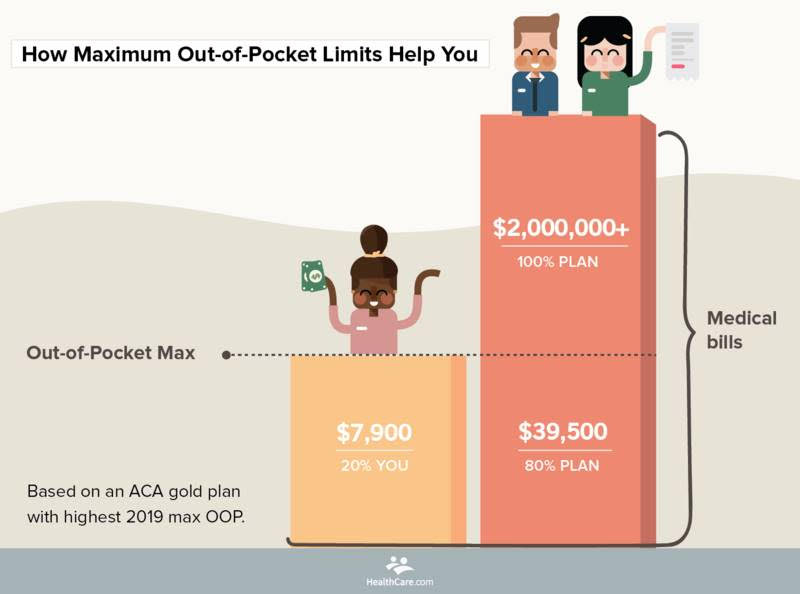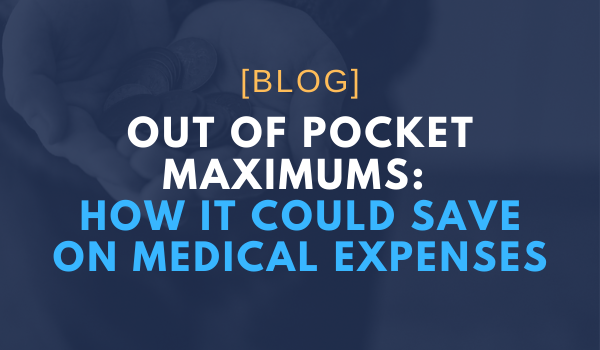Healthcare is getting more expensive.
The most recent Large Employers Health Care Strategy and Plan Design Survey predicts a 5% increase in overall costs over the course of this year, resulting in an average cost of $15,375 per employee. Employees are expected to shoulder nearly 30% of that burden in the form of premiums, deductibles, copays, and coinsurance.
These expenses are how you can manage your costs and maintain the overall affordability of your plan. However, there needs to be some protection in place so that employees don’t end up taking on too much of the burden of care.
Out-of-pocket maximums provide that protection. The more you understand it, the more effectively you can control your employees’ healthcare costs.
- An out-of-pocket maximum is the most a covered person can pay each year for covered services
- Premiums do not count toward out-of-pocket maximums, but copays and coinsurance do
- When a covered person hits the out-of-pocket maximum, the insurance company pays all healthcare expenses for the rest of the year
- Out-of-pocket maximum is not the same as a deductible, which is the amount that a covered person has to pay before insurance starts contributing
- A lower out-of-pocket maximum can help employees reduce their annual healthcare spending
What Is an Out-of-Pocket Maximum?
An out-of-pocket maximum is the most that an employee can be required to pay for health care in a given year, not including monthly premiums.
Without it, they could be on the hook for astronomical amounts if they need costly treatment, like open-heart surgery ($324,000) or bone marrow transplant (up to $676,800).
The Affordable Care Act (ACA) imposes limits on an employee’s out-of-pocket-maximum. In 2020, those limits are $8,150 for an individual and $16,300 for a family plan.
A plan subject to the ACA may not have out-of-pocket maximums any higher than these federal limits.
However, you can offer plans with lower out-of-pocket maximums.
What Counts Toward Out-of-Pocket Maximums?
Generally, costs such as deductibles, copayments, coinsurance, and any other expense paid by the employee counts towards the out-of-pocket maximum. However, out-of-pocket maximums only apply to costs paid for “essential health benefits.”
They include:
- Preventive and wellness care
- Outpatient services
- Pediatric care, including dental and vision care (adult dental and vision are not considered essential)
- Prescription medication
- Behavioral health and substance use disorder treatment
- Emergency services
- Hospitalization
- Maternity and newborn care
- Rehabilitative services and devices
- Laboratory testing
While costs paid by an employee in connection with any of these services will generally count towards their out-of-pocket maximum, an insurance company may impose higher out-of-pocket maximums for non-emergency care treatment by out-of-network providers.
Your employees should always check whether or not the provider is in-network in order to maximize the amount that counts against their out-of-pocket maximum.
What Doesn’t Count?
Not everything counts toward the employee’s out-of-pocket maximum. Remember, monthly insurance premiums paid by the employee do not count toward their out-of-pocket maximum.
In addition, costs associated with non-essential health benefits, which may not be covered under your health plan, do not count towards the out-of-pocket maximum.
That includes costs related to:
- Services from outside your provider network, including balance billing charges
- Elective services like cosmetic surgery
- Non-essential health benefits, including adult vision and dental care
For example…
Let’s say your employee elects to have cosmetic surgery and has already paid $200 in copays and coinsurance this year, and the plan’s out-of-pocket maximum is $5,000.
If they pay $5,500 for a rhinoplasty (aka, nose job) none of the cost paid by the employee will count towards their out-of-pocket maximum.
They will still have $4,800 in covered services left to pay before hitting their out-of-pocket maximum.
What Happens When Your Employee Hits Their Out-of-Pocket Maximum?
Once the out-of-pocket maximum is reached on covered expenses, the insurance company takes over paying the full amount for those services. This lasts until the end of the coverage year.

Be aware: even after an employee hits the plan’s out-of-pocket maximum, an insurance company won’t pay for services that aren’t covered by the policy. An employee must make sure that expenses are covered ahead of time. Otherwise, they could end up with thousands more in medical bills.
Out-of-Pocket Maximum, Deductible, and Coinsurance: Compared
Out-of-Pocket Maximum versus Deductible
Many people confuse out-of-pocket maximums with deductibles.
Here’s the difference:
- An out-of-pocket maximum is the total amount that a covered person will pay per year under a certain policy
- A deductible is the amount that a covered person will pay before the insurance coverage activates for that year
Deductibles can be confusing because certain services may be exempt. Many plans, including those sold through the Federal Marketplace, will cover routine and preventive care even before you’ve met your deductible. Check with your insurance company to find out which services fall into this category.
Your plan may also have separate deductibles. If you have a family plan, you may also have individual deductibles for each covered person as well as an overall family deductible.
Deductible, Coinsurance, and Out-of-Pocket Maximum: How They Work Together
After a covered person pays their deductible, the insurance policy pays a certain percentage of covered healthcare expenses. The covered person pays the remainder, which is called the coinsurance amount.
Here’s an example:
Let’s say you go in for a $5,000 surgery.
Your deductible is $2,000 and your coinsurance is 20%.
You pay your $2,000 deductible and $3,000 is left.
Of that, your insurer pays 80%, leaving you with the remaining 20%, or $600. That $600 is your coinsurance.
When you hit your out-of-pocket maximum, your insurer can’t charge you coinsurance for the rest of the year.
Conclusion
When looking for health insurance, HR managers, CFOs, and business owners must take into consideration deductibles, coinsurance and out-of-pocket maximums.
Lowering out-of-pocket maximums may result in higher premiums. However, they may also help your employees get the most out of their health insurance plans.
Do you know what the out-of-pocket maximum is on your health plan?
Leave a comment below or contact us today.



